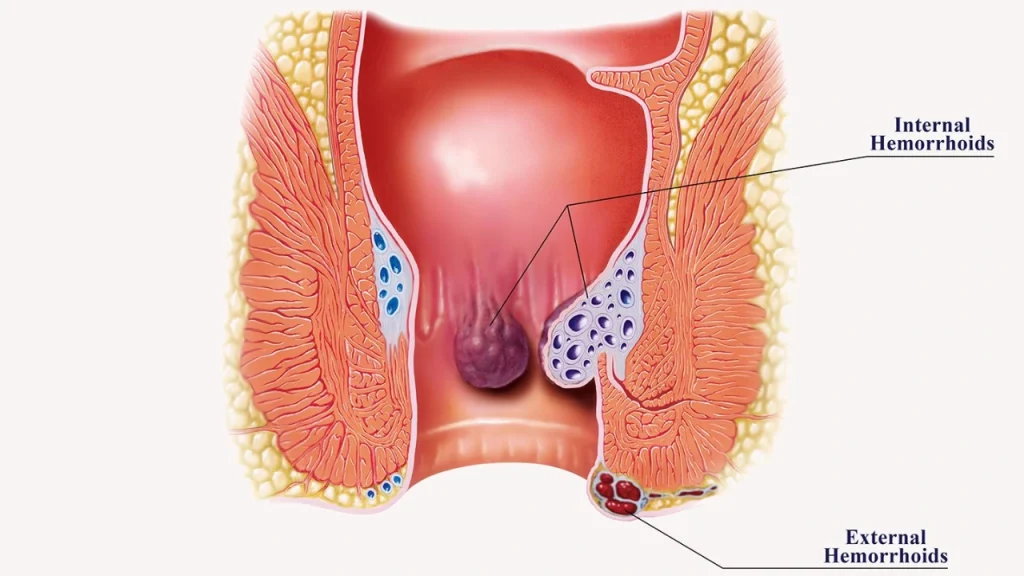Many people suffer in silence due to embarrassment or a lack of clear information. This guide is created to provide factual, comprehensive, and clear medical information for patients in India. Our goal is to demystify this common condition and empower individuals to seek timely and appropriate medical care.
Piles are swollen veins in the lower part of the rectum and anus. They are similar to varicose veins that appear on the legs. This is an extremely common condition, affecting a large number of adults at some point in their lives. While they can cause significant discomfort, pain, and anxiety, it is important to know that effective treatments are available.
Our commitment is to patient health through education. This guide will provide the knowledge needed to have an informed discussion with a doctor and to make confident decisions about managing this treatable condition.
What Are Piles?

To understand what piles are, it is first necessary to understand the normal anatomy of the anal canal. The anal canal is the last part of the large intestine. It is a short tube, about 4 centimeters long, that connects the rectum to the outside of the body.
Inside the lining of the upper anal canal, there are specialized cushions of tissue. These are called hemorrhoidal cushions. These cushions are a normal part of the body. They are made up of a network of blood vessels (veins and arteries), smooth muscle, and connective tissue.
These hemorrhoidal cushions serve two important functions:
- Continence: They help to seal the anal canal, contributing to the complete closure of the anus. This helps prevent the leakage of liquid stool or gas.
- Protection: They act as soft cushions that protect the anal sphincter muscles during the passage of stool.
How Normal Cushions Become Piles
Piles develop when there is an increase in pressure in the veins of the lower rectum and anal canal. This sustained pressure causes the veins within the hemorrhoidal cushions to stretch, swell, and become inflamed. The supporting connective tissues can weaken and stretch, causing the cushions to bulge and, in some cases, slide down or protrude outside the anus.
When these hemorrhoidal cushions become enlarged and cause symptoms like bleeding, pain, or itching, they are then referred to as piles or hemorrhoids. In India, the term “piles” is most commonly used, while “hemorrhoids” is the medical term. They refer to the exact same condition. It is not a disease one “catches” but rather a condition that develops due to a combination of factors, primarily increased pressure in the pelvic and rectal area.
Common Causes and Risk Factors for Piles
Several factors can contribute to this increased pressure in the lower rectum, leading to the development of piles. Understanding these risk factors is the first step toward prevention and management.
- Straining During Bowel Movements: This is the most common cause. Pushing too hard to pass stool puts direct force on the veins in the rectum and anus.
- Chronic Constipation or Diarrhea: Constipation leads to hard stools and straining. Chronic diarrhea can also irritate and put pressure on the anal canal.
- Low-Fiber Diet: A diet lacking in fiber (found in fruits, vegetables, and whole grains) is a primary cause of constipation, which in turn leads to straining.
- Sitting for Long Periods: Spending extended time sitting, especially on the toilet, allows blood to pool in the hemorrhoidal veins, increasing pressure.
- Pregnancy: The pressure of the growing uterus on the pelvic veins, combined with hormonal changes that relax the veins, makes pregnant women more susceptible to piles.
- Obesity: Excess body weight, particularly around the abdomen, increases pressure on the pelvic veins.
- Aging: As we age, the connective tissues that support the veins in the rectum and anus can weaken, making them more likely to bulge.
- Chronic Heavy Lifting: Regularly lifting heavy objects can increase abdominal pressure and contribute to the development of piles.
Key Takeaways
Piles, also known as hemorrhoids, are not a disease but a condition where normal tissue in the anal canal becomes swollen due to prolonged pressure. This pressure is most often caused by lifestyle factors like chronic straining during bowel movements, a low-fiber diet leading to constipation, and sitting for long periods. Recognizing these common causes is the first and most important step for patients in India to prevent and effectively manage this treatable condition.
